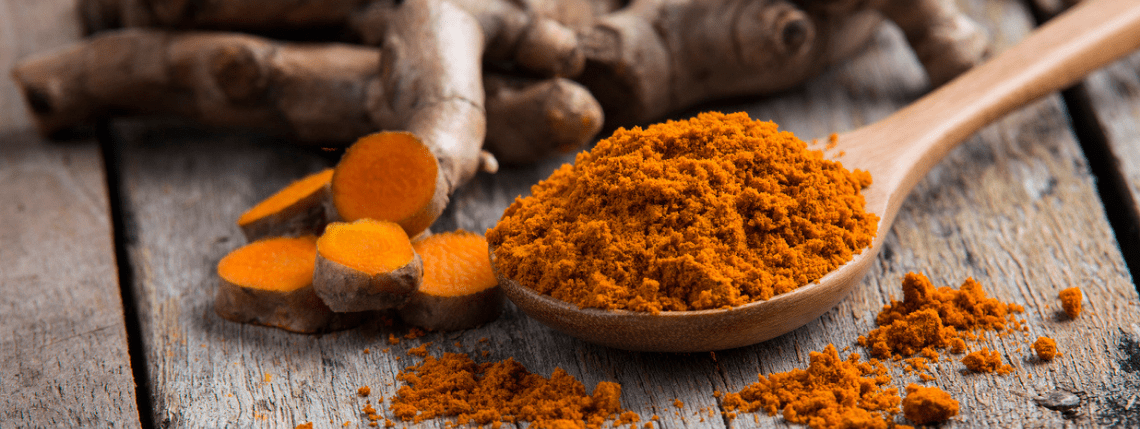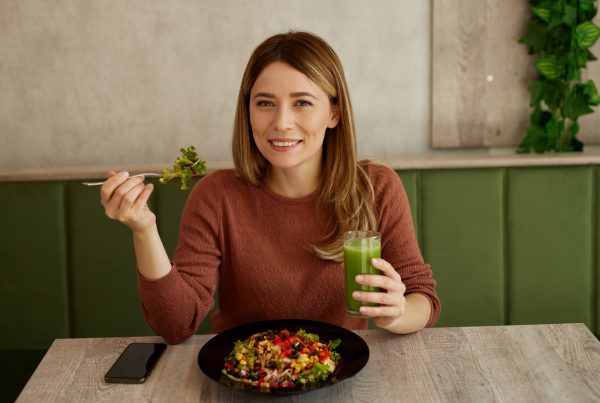Turmeric – a super spice or just a great curry ingredient?
Dr Linia Patel asks, does turmeric live up to the hype?
Known as the ‘golden spice’, turmeric has been used for centuries, not only to flavour, colour and preserve food but also for its medicinal purposes. Turmeric is one of the most studied spices and now it’s also the trendiest new superfood on the block, but does this spice live up to the hype?
What is it?
A member of the ginger family, turmeric is derived from the plant Curcuma longo and its root is the most useful part for culinary and medicinal purposes. It has an earthy aroma and its flavour profile is slightly peppery and bitter with a subtle ginger taste. Turmeric provides a solid dose of phytochemicals – plant compounds that help fight inflammation and oxidative stress, as well the daily wear and tear our bodies endure. The root contains plenty of vitamin C, potassium and manganese; however, when it comes to health benefits, turmeric’s biggest selling point is curcumin. Curcumin makes up 2-5% of the turmeric plant.1,2
Does it have proven health benefits?
Early findings from animal and lab studies suggested that curcumin had anti-inflammatory, anti-cancer and antioxidant properties1. This led to the initial hype of turmeric being touted as a super spice. With time, the amount and quality of scientific evidence to support the role of curcumin, particularly with its role in inflammation, continued to mount2. A recent meta-analysis found that curcumin (approx. 1000mg/day) can reduce arthritis-associated pain and provide some functional benefits3. Other studies looking at the role of turmeric in pain have reported a positive effect when participants used 800mg of turmeric in capsule form each day1,2.
Curcumin’s anti-inflammatory properties have also been linked to being beneficial for conditions such as heart disease, digestive disorders like chron’s disease, osteoarthritis and Alzheimer’s, for example1,2,3. Although there are studies that suggest a benefit for these conditions, it’s too soon to rate the effectiveness of turmeric in providing relief for all these conditions and dosing recommendations1,2,3. Curcumin by itself is poorly absorbed4. Bioavailability is thought to be improved in the presence of black pepper; however, overall, more research is needed to determine specific recommendations and bioavailability of supplements. The long-term benefits of curcumin are still unknown and more research is needed to answer this question as well1-4.
Are there any side effects?
In India, where turmeric consumption is daily, the average turmeric intake is approximately 2-2.5g/day, which provides about 60-100mg of curcumin daily. The research to date suggests 1-3g of dried powdered turmeric root per day is needed to gain health benefits. With regard to the upper limit of intake, some studies suggest that doses of up to 8-12g per day are safe. The main reported side effect is some gastrointestinal discomfort3,4.
Take-home message
While there are still no clear recommendations for curcumin dosage for the health conditions, in my opinion this is one super spice to watch. If you are interested in using it for a specific health condition, be sure to speak to a dietitian or registered nutritionist. Even if you aren’t interested in supplementing with it, my advice is to find ways to use turmeric regularly in your diet. Add a pinch to your scrambled eggs or omelette, or sprinkle over roasted potatoes or veg, or add a teaspoon to a cup of warm milk and honey for a comforting drink.
References
- Kocaadam et al (2017), Curcumin, an active component of turmeric (Curcuma longa) and its effects on health, Crit Rev Food Sci Nutr., 57(13): 2,889-95
- Daily et al (2016), Efficacy of turmeric extracts and curcumin for alleviating the symptoms of joint arthritis: a systematic review and metanalysis of randomized clinical trials, J Med Food., 19(8): 717-29.
- Rad Sharifi J (2020), Turmeric and its major compound curcumin on health: bioactive effects and safety profiles for food, pharmaceutical, biotechnological and medicinal applications, Front Pharmcol., 15:11:012021.
- El Hack M et al (2021), Curcumin, the active substance of turmeric: its effects on health and ways to improve its bioavailability, Sci Food Agric., 10.
Why not check out Linia’s online education course, ‘Nutrition in Menopause’ for both fitness professionals and also those going through their own menopause journey?
Author Bio:

Dr Linia Patel has a BSc degree in biochemistry and physiology and has recently achieved a PhD in public health. Linia is a leading dietitian and sports nutritionist. Her passion is translating nutritional science into easy-to-digest and practical advice.







